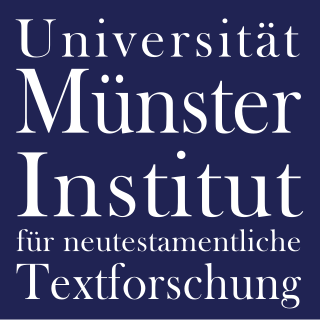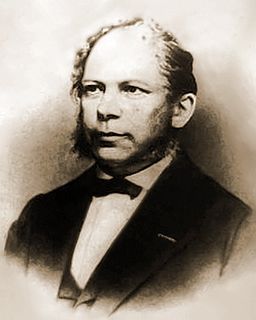Description
The original codex contained lessons from the Gospels (Evangelistarium), on 4 parchment leaves, with some lacunae. The leaves are measured (24 cm by 15.5 cm). [1] It has musical notes. Many leaves at the end and some leaves inside were lost [2]

Gospel originally meant the Christian message itself, but in the 2nd century it came to be used for the books in which the message was set out. The four canonical gospels — Matthew, Mark, Luke and John — were probably written between AD 66 and 110, building on older sources and traditions, and each gospel has its own distinctive understanding of Jesus and his divine role. All four are anonymous, and it is almost certain that none were written by an eyewitness. They are the main source of information on the life of Jesus as searched for in the quest for the historical Jesus. Modern scholars are cautious of relying on them unquestioningly, but critical study attempts to distinguish the original ideas of Jesus from those of the later authors. Many non-canonical gospels were also written, all later than the four, and all, like them, advocating the particular theological views of their authors.

A lacuna is a gap in a manuscript, inscription, text, painting, or a musical work. A manuscript, text, or section suffering from gaps is said to be "lacunose" or "lacunulose". Some books intentionally add lacunas to be filled in by the owner, often as a game or to encourage children to create their own stories.
The text is written in Greek minuscule letters, in two columns per page, 25 lines per page. [3] [4] [1]
The codex contains lessons, which were red for sixth Saturday in Lent (John 11:41), Palm Sunday (John 12:11), part of Matins (from Matthew 21:36) and Vespers (to Matthew 24:26), for Monday in Holy Week. [2]

Palm Sunday is a Christian moveable feast that falls on the Sunday before Easter. The feast commemorates Jesus' triumphal entry into Jerusalem, an event mentioned in each of the four canonical Gospels.
Minuscule 675, ε 446, is a Greek minuscule manuscript of the New Testament, on parchment. Palaeographically it has been assigned to the 13th century. The manuscript has survived in a fragmentary condition. Scrivener labelled it by 621e.
Codex Tischendorfianus V or Lectionary 293 (Gregory-Aland), designated by siglum ℓ 293 is a Greek manuscript of the New Testament, on parchment. Palaeographically it has been assigned to the 8th century.
Scrivener labelled it as 190e.
Lectionary 301 (Gregory-Aland), designated by siglum ℓ 301 is a Greek manuscript of the New Testament, on parchment. Palaeographically it has been assigned to the 13th century. The manuscript is lacunose.
Lectionary 305 (Gregory-Aland), designated by siglum ℓ 305 is a Greek manuscript of the New Testament, on parchment. Palaeographically it has been assigned to the 12th century. The manuscript is lacunose.
Lectionary 306 (Gregory-Aland), designated by siglum ℓ 306 is a Greek manuscript of the New Testament, on parchment. Palaeographically it has been assigned to the 13th century. The manuscript is lacunose.
Lectionary 307 (Gregory-Aland), designated by siglum ℓ 307 is a Greek manuscript of the New Testament, on parchment. Palaeographically it has been assigned to the 12th century. The manuscript is lacunose.
Lectionary 308 (Gregory-Aland), designated by siglum ℓ 308 is a Greek manuscript of the New Testament, on parchment. Palaeographically it has been assigned to the 11th century. The manuscript is lacunose.
Lectionary 309 (Gregory-Aland), designated by siglum ℓ 309 is a Greek manuscript of the New Testament, on parchment. Palaeographically it has been assigned to the 10th century. The manuscript is lacunose.
Lectionary 311 (Gregory-Aland), designated by siglum ℓ 311 is a bilingual Greek–Arabic manuscript of the New Testament, on parchment. Palaeographically it has been assigned to the 12th century. The manuscript has survived in a fragmentary condition.
Lectionary 312 (Gregory-Aland), designated by siglum ℓ 312 is a Greek manuscript of the New Testament, on parchment. Palaeographically it has been assigned to the 9th-century. The manuscript has survived in a fragmentary condition.
Lectionary 317 (Gregory-Aland), designated by siglum ℓ 317 is a Greek manuscript of the New Testament, on parchment. Palaeographically it has been assigned to the 9th century. The manuscript has survived in a fragmentary condition.
Lectionary 325 (Gregory-Aland), designated by siglum ℓ 325 is a Greek manuscript of the New Testament, on parchment. Palaeographically it has been assigned to the 13th century. The manuscript has not survived in complete condition.
Lectionary 330 (Gregory-Aland), designated by siglum ℓ 330 is a Greek manuscript of the New Testament, on parchment. Palaeographically it has been assigned to the 12th century. The manuscript has not survived in complete condition.

Lectionary 313 (Gregory-Aland), designated by siglum ℓ 313 is a Greek manuscript of the New Testament, on parchment. Palaeographically it has been assigned to the 14th-century. The manuscript has survived in a fragmentary condition.
Lectionary 314 (Gregory-Aland), designated by siglum ℓ 314 is a Greek manuscript of the New Testament, on parchment. Palaeographically it has been assigned to the 12th century. The manuscript has survived in a fragmentary condition.
Lectionary 333 (Gregory-Aland), designated by siglum ℓ 333, is a Greek manuscript of the New Testament, on parchment. Palaeographically it has been assigned to the 13th century. The manuscript has not survived in complete condition.
Lectionary 334 (Gregory-Aland), designated by siglum ℓ 334 is a Greek manuscript of the New Testament, on parchment. Palaeographically it has been assigned to the 11th-century. It is a palimpsest The manuscript has not survived in complete condition.
Lectionary 335 (Gregory-Aland), designated by siglum ℓ 335 is a Greek manuscript of the New Testament, on parchment. Palaeographically it has been assigned to the 11th-century. The manuscript has survived in complete condition.
Lectionary 336 (Gregory-Aland), designated by siglum ℓ 336 is a Greek manuscript of the New Testament, on parchment. Palaeographically it has been assigned to the 14th century. The manuscript has not survived in complete condition.
Lectionary 341 (Gregory-Aland), designated by siglum ℓ 341 is a Greek manuscript of the New Testament, on parchment. Palaeographically it has been assigned to the 11th-century. The manuscript has not survived in complete condition.







